Last year at the Centre Pompidou in Paris, Philippe Rahm‘s installation Diurnisme was introducing the night during the day as a perverted answer to the perpetual daytime created by the modern lightening, internet and globalization. The room was bathed in a very bright orange/yellow light that triggered the production of melatonin which regulates our perception of day and night, fooling the body into thinking that it is nighttime.
Rahm is an architect of the invisible and physiological aspects of space. One of his earlier projects, Hormonorium, featured an alpine-like climate, complete with the brighter light and shorter supply of oxygen you get at high altitudes. Made of 528 fluorescent tubes, the floor emitted a white light that reproduces the solar spectrum. The very bright light stimulates the retina, which transmits information to the pineal gland that causes a decrease in melatonin secretion. Visitors were thus supposed to experience a decrease in fatigue, a probable increase in sexual desire, and regulation of moods. Besides, the oxygen-rarefied space caused a slight euphoria due to endorphin production.
Rahm is showing two new projects at Manifesta 7, the European Biennial of Contemporary Art currrently taking place in Northern Italy. Both installations engage with architecture’s contingent relationship with climate, this time with a higher emphasis on the state of our planet:
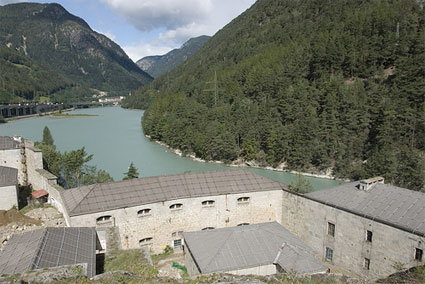
The first project was exhibited in the Scenarios exhibition at Fortezza, near Bolzano. That’s actually the only show i didn’t visit (but if you read italian, i’ll recommend you the report that SounDesign wrote of the show).
Fortezza was built in the 1830s by the Habsburgian Empire in order to defend the north/south passage through the Dolomite mountain region from two sides. For the biennale, the fortress is hosting projects which are mostly immaterial: voice recordings, text, light and landscape.
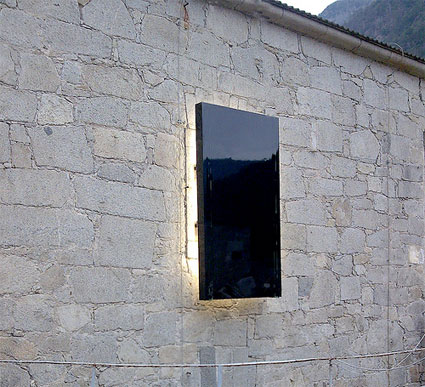 Philippe Rahm, Climate Uchornia, 2008. Photo by Philippe Rahm
Philippe Rahm, Climate Uchornia, 2008. Photo by Philippe Rahm
Rahm placed black-backed lightboxes over the outside of some of the fortress windows. This light installation, named Climate Uchronia, refers to how our perception of natural and artificial ambient conditions are subtly influenced by factors such as climate change.
Rahm’s purpose is to re-create, inside a room, the climate and exact daylight that the city of Bolzano would experience in the absence of global warming. The installation demonstrates how today, you can still obtain a ‘natural’ climate but only through artificial means.
The concept is not as ‘crazy-arty’ as some might believe. In the UK, the Royal Society is about to launch a study aimed at reviewing the possibility of saving the planet by “geoengineering” the climate on the grandest scales imaginable.
Based on an Atmospheric Chemistry Model that sets out to remove the effects of greenhouse gases since 1850, a computer generates the uchronian climate of Rahm’s installation for each minute of the duration of the biennale. The software calculates the variation of light intensity depending of the variation of the relative humidity in the air. With Climate Uchronia, the architect offers visitors the possibility to inhabit for just a moment a world that we will never know.
The second work, Météorologie d’intérieur / Interior Weather, 2007, was exhibited in Rovereto, once again in a post-industrial sites (the Ex-Peterlini cocoa factory). I forgot to take a picture of the outside of the exhibition space as i was too busy admiring the glorious Uterus Flags that graced the street right in front of the Ex-Peterlini.
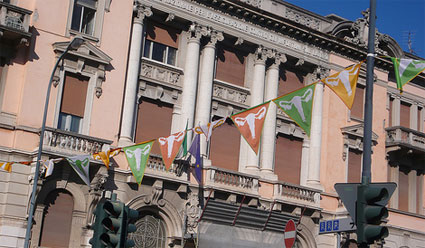
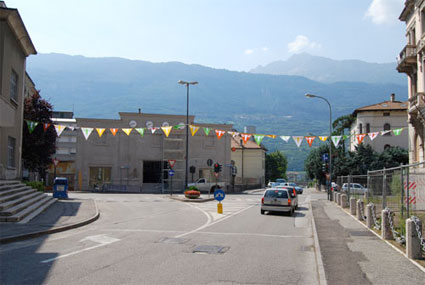 Uterus Flags, 2008 (by Ex-Peterlini). Libia Castro & Ólafur Ólafsson
Uterus Flags, 2008 (by Ex-Peterlini). Libia Castro & Ólafur Ólafsson
Interior Weather is conceived as two spaces, one white gallery whre an abstract “interior weather” condition is produced, and the other black space, where the resultant data is interpreted.
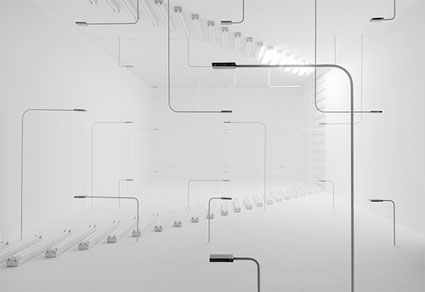 Interior Weather. Photo : Centre Canadien d’Architecture / Canadian Centre for Architecture, Montréal. Credit: Michel Legendre
Interior Weather. Photo : Centre Canadien d’Architecture / Canadian Centre for Architecture, Montréal. Credit: Michel Legendre
In a brightly lit and enclosed room, sensors measure variations in light, humidity and temperature; the space is analyzed as a micro-geography in constant flux.
The results of these measurements are sent to the adjacent gallery where they are visualized as images and stories. Unlike what happened in the first gallery, stern sensors are not guiding the communication of the data. Instead, the information is freely reinterpreted in “fictional scenarios” written by French writer Alain Robbe-Grillet and visualized with a projection in the black room.
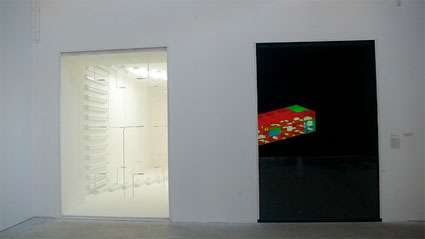
The installation suggests how the infinite combination of light, humidity and temperature parameters have the potential to generate new spatial practices and social behaviours, and in turn, new architectural forms. In opposition to previous architectural theories (namely the Form follows function position vs the Function follows form one), function and form emerge here as a spontaneous response to climate. The possible use of space is dictated only by the chance confluence of climatic parameters, suggesting new spatial practices, new forms of social behavior and new urban and architectural forms.
